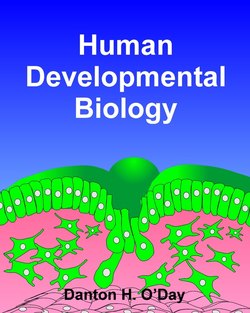Читать книгу Human Developmental Biology - Danton Inc. O'Day - Страница 7
The Journey of the Germ Cells
ОглавлениеFigure 2.1. The journey of the germ cells. The migration of PGCs and the events that transform them into sperm or eggs.
Staining with alkaline phosphatase in fixed embryo sections provided the first evidence that the PGCs migrate from their site of origin in the epiblast to the future genital ridges. The subsequent events involved in the journey of the germ cells were subsequently revealed a diversity of techniques (Figures 2.1, 2.2). During the early stages the number of PGCs increases by normal mitotic divisions. When the PGCs enter the genital ridges they will come under various influences (i.e., hormones, cellular interactions) that will dictate whether they will become oogonia (females) or spermatogonia (males).
In the female genital ridges, after a specific period of cell divisions, cell death of the PGCs will begin and continue. Mitosis will stop. In contrast, in the male genital ridges mitosis of the PGCs will continue throughout life. Cell death is comparatively minimal since it has not yet been detected to any significant degree in the testes. The hormonal events of puberty will cause the PGCs to complete their differentiation into functional eggs and sperm as detailed in the following chapters. Gametogenesis continues until fully formed gametes are produced and released (ovulation or ejaculation).
